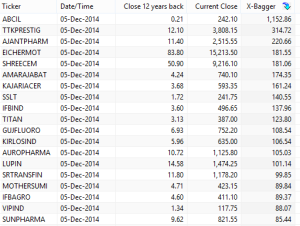For a trader, its essential that any strategy he uses needs to at least in historical testing beat Buy & Hold returns (and since we assume a lot in our back-tests, higher the returns compared to B&H, the better). After all, the argument here is simple. If you spend time and effort in markets, the least you should be expected of doing is beating the guy on the street who may have just bought nifty bees and went into deep sleep.
Then again, that may not entirely essential to a investor whose idea is to get a return better than other asset classes and if one comes with lower risks, the better.
The biggest advantage of Buy & Hold on Nifty Bees is its simplicity. You buy it and you can forget all about it. X years later, your returns shall closely mimic the returns of the Index (some variations shall exist due to tracking error).
The biggest disadvantage is that when Index falls big, your investment gets hurt too. For example, a guy who invested into Nifty Bees 2006 would have seen his returns being absolutely zero if he had checked in late 2008 / early 2009. A FD on the other hand would have paid him much higher returns without a iota of risk.
The best way to beat the markets one is told is to buy good companies and hold on (forever). But here too, it comes down all to when you enter. Let me give a example. I doubt you shall be able to say that buying Warren Buffett’s Berkshire Hathaway is a stupid strategy.
This is what I tweeted a couple of days back
An investment into Berkshire Hathway ($BRK-A) at close of 1998 as of today would have yielded a CAGR of 7.66%.
I do not know whether a CAGR return of 7.66% for Americans is huge, but the fact that you could have bought a Treasury Bond (30 Year) which was yielding 5% returns at the same time (End 1998) says that the results aren’t way out of whack with the expectations that could have been made. But I am digressing from the agenda.
Beating the markets on long term is tough. The survivors we see today hide the huge lot of fund managers who have literally disappeared. And beating the markets without having similar draw-down is even more tough. Even the best managers go through tough draw-downs that can send a chill down any investors spine.
Meb Faber some time back talked about a simple strategy. Rather than repeat what he has to say, I would recommend you to head over and take a look – http://mebfaber.com/timing-model/
I tested this strategy on Nifty (using Nifty Total Returns Index to ensure that we account for Dividends which get missed when one uses only Spot Nifty). The results are outlined here;
Test Period: June 1999 till date (December 2014)
Total Raw Returns: 9162 Points (higher than CNX Nifty since it includes Dividends).
System Returns: 8288 Points.
Raw Draw-down: 48.81%
System Draw-down: 26.71%
Raw Holding Period: 173 Months
System Holding Period: 131 Months
Raw Number of Trades: 1
System Number of Trades: 12 (last one being Long from November 2013)
Buy Price & Sell Price = Opening price of the next bar (1st trading day of next month). No Transaction / Slippage charges used.
But the big issue with directly using above data is that you cannot buy Nifty Total Return Index. Instead, what if one uses Nifty Bees. Nifty Bees has a tracking error (bit outdated data) of around 0.20% and a cost of 0.50%. Compared to other options available, this is the best.
In my search on that issue, stumbled upon Kiran’s blog where he has provided some stats on the same out here
All in all, I think for some one who wants to invest directly into market (some Mutual funds have outperformed strongly, but too much of Survivor bias makes comparing them apples to oranges) and yet not get caught when markets drop like a hot potato, this simple strategy is worth a look.

